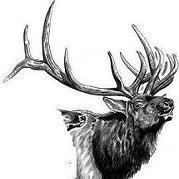Welcome To Mopar1973Man.Com LLC
We are privately owned, with access to a professional Diesel Mechanic, who can provide additional support for Dodge Ram Cummins Diesel vehicles. Many detailed information is FREE and available to read. However, in order to interact directly with our Diesel Mechanic, Michael, by phone, via zoom, or as the web-based option, Subscription Plans are offered that will enable these and other features. Go to the Subscription Page and Select a desired plan. At any time you wish to cancel the Subscription, click Subscription Page, select the 'Cancel' button, and it will be canceled. For your convenience, all subscriptions are on auto-renewal.
- Replies 47
- Views 17.6k
- Created
- Last Reply
Top Posters In This Topic
-
 ISX 18 posts
ISX 18 posts -
 AH64ID 11 posts
AH64ID 11 posts -
 Mopar1973Man 6 posts
Mopar1973Man 6 posts -
 CSM 4 posts
CSM 4 posts
Featured Replies
Did This Forum Post Help You?
Show the author some love by liking their post!
Welcome To Mopar1973Man.Com LLC
We are privately owned, with access to a professional Diesel Mechanic, who can provide additional support for Dodge Ram Cummins Diesel vehicles. Many detailed information is FREE and available to read. However, in order to interact directly with our Diesel Mechanic, Michael, by phone, via zoom, or as the web-based option, Subscription Plans are offered that will enable these and other features. Go to the Subscription Page and Select a desired plan. At any time you wish to cancel the Subscription, click Subscription Page, select the 'Cancel' button, and it will be canceled. For your convenience, all subscriptions are on auto-renewal.


One thing I have noticed a lot of difference in is valve lash. When you tighten the lash up (decrease the gap amount), you make the valve open sooner and close later. This allows for more air to get in and out. By tightening them up, the turbo lights sooner because more air is being shoved out at a lower RPM. This gives you a ton more efficiency down low from what I have noticed because boost helps burn fuel, when there isn't enough air, fuel is burned inefficiently. Inefficient burn can be compromised for less power by letting off and getting back into an efficient burn ratio, but this is inefficient in itself because you might be starting to go up a hill and you will either have to go up it slowly or maintain speed by giving it more fuel that will burn rich but get the turbo spooling eventually. Why should you ever have to wait for that turbo? Running the valves tight help out a lot, but there is more to it that I want to know. The exhaust valve is what drives the turbo sooner if you run it tighter, but what does the intake valve have to do with anything? Do they work hand in hand? As in to get more air out the exhaust valve do you need to run a tighter intake to get more air in? Is there any benefit to running it looser? One issue with running them tighter is you can only go so tight before the valve and the piston contact, which is not something that is very appealing Thankfully valves tend to loosen over time rather than tighten.
Thankfully valves tend to loosen over time rather than tighten.